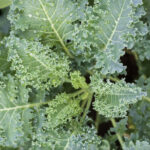For all its brevity, the month of February has more than its share of holidays.
From the vernal predictions of a penned-up ground squirrel to the birthdays of famous presidents, this shortest month shines in bleakest winter. My favorite is that celebration of ardor and romance that we call Valentine’s Day. Historical facts aside, in this modern time it centers around love, chocolate and Champagne.
The world’s most famous sparkling wine is named after the Champagne region in northern France. It is usually a blend of Chardonnay, pinot noir and pinot meunier. If all Chardonnay, it is labeled “blanc de blanc.” If only red grapes are used, it is called “blanc de noir,” which is a white wine from a black grape.
Besides the color, sparkling wine is also known for its bubbles, which get into the bottle through a secondary fermentation known as “methode champenoise” in the Champagne region of France, crèmant in the rest of France or “methode traditionelle” for sparkling wine from the rest of the globe. Wines labeled as such are of the highest quality.
Perhaps the most confusing aspect of bubbly is its dryness or sweetness, which refers to the amount of sugar in it. From sweetest to driest, sparkling wines are called doux, demi-sec, dry, extra-dry, brut, extra-brut and brut nature. I prefer my sparklers in the dry range with a little sugary finish and find that brut, for me, is almost bone dry. So, it’s important to read the label to ensure both quality and desired level of sweetness, especially if you’re pairing the wine with food.
A new direction in sparkling wine is the proliferation of rosé. This is a definite win-win as it allows the wine to match more styles of food. Not only is rosé a very attractive quaff, but, with added flavors and tannin, it stretches its legs over more entrees on the menu. This is a trend in sparklers from all around the globe, whether a Spanish cava, the bubblers from California or even the wines from France that are not labeled “Champagne.”
In many ways, we live in a golden age. Never before has so much good wine come to fore. Sparkling wine is made all over the world as well as locally. It lends itself to a dazzling variety of foods with a high level of acidity and also works well as a palate scrubber. In its sweeter versions, it is delicious to sip for any good reason—or none at all.
Legend says that Champagne was invented by the monk Dom Pérignon who famously said, “Come quickly, I am drinking the stars.” Like most legends, the story is a bit shaky, but the enjoyment of this most wonderful wine is something we can reach out and embrace every day. So, enjoy this beautiful quaff, on this unique day, with a special person. It will be one of your most amazing memories.
Keep sipping, Steve
Author: Steve Juliana






